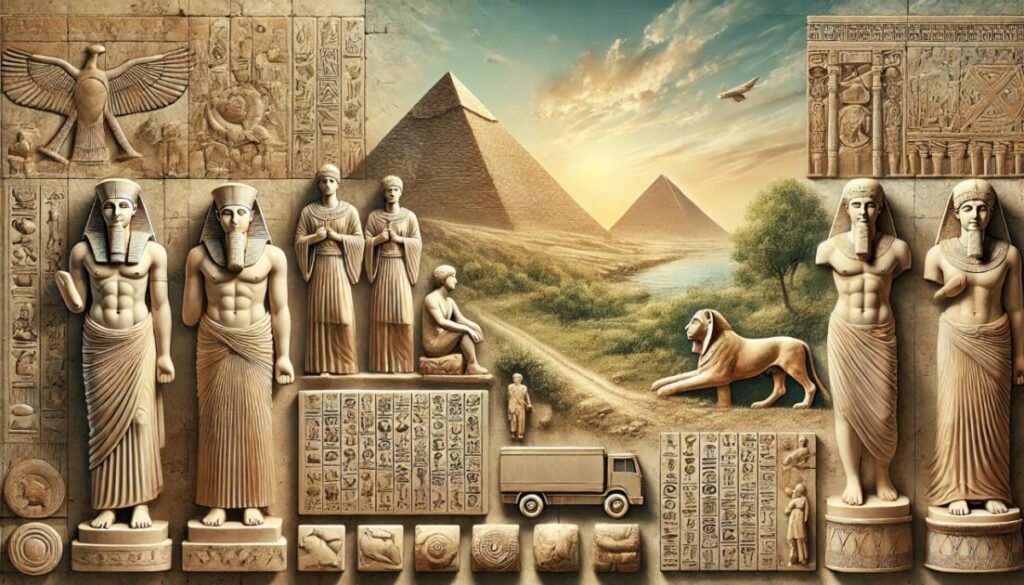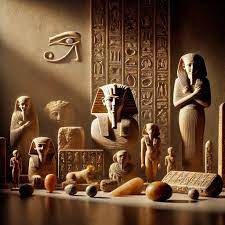Table of Contents
- Introduction to Ancient Artz
- The Significance of Ancient Art in Modern Society
- Five Iconic Masterpieces and Their Impact on the World
- Conservation Efforts and Challenges for Ancient Artz
- Unveiling the Mysteries and Stories Behind Ancient Artz
- The Role of Technology in Preserving and Studying Ancient Artz
- Conclusion: Honoring the Legacy of Ancient Artz for Future Generations
- FAQs:
Introduction to Ancient Artz

Enter the creative space renewed by the past with colours and designs accentuating its ancient artz. The oldest artz is not simply a view of the yesteryears but a celebration of art and human expression that will never grow old. These aksakaltas have a detailed past from the days of ancient walls up to the walls that guide us in today’s world; it has always been about sights, feelings, and thoughts.
Everything advances so much daily that one might forget how priceless such artistic objects are as treasures. However, these treasures are very correctly placed in the cultural identity fabric. Each has a story behind it that is yet to be told, which may seem as long lost to the others.
As we delve into famous works of art, their history, cultural contexts in which they were created, their preservation problems, methods of preservation that were invented in the last century, and what future generations will have from the artz that is ancient, so too shall some of the audience’s perspective be inspired. Understand how these incredible pieces of art and architecture have influenced the world and continue to do so!
The Significance of Ancient Art in Modern Society
Ancient artz stands as evidence of the existence of the culture by the civilization that practiced them in the past. They embody the values, beliefs, and activities of people who lived ages ago. The advancement of technology and modernism in society has not turned off these art forms practiced in the past. These art forms link people of different ages by ensuring the narratives do not die out.
In addition, ancient artz also acts as the motivation for modern artists as they create art. The skills and subjects depicted by ancient craftsmen have not become relics of the past but are actively used in developing contemporary art forms.
Looking at such works cannot fail to evoke strong emotions. They stimulate discussions of self-identity, ancestry, and humanity in different eras.
Focusing on these works deepens one’s understanding of the world regarding appreciating other people’s cultures. This promotes the importance of culture, which formed the basis of civilizations across generations. Every human being longs to create something in their lifetime that can inspire future generations.
Five Iconic Masterpieces and Their Impact on the World
The chronology of ancient artz is marked by grand works that transformed civilizations and were authoritative in different epochs. Each reproduction has some voice that advocates for the values of the given time.
Take, for example, the enchanting Venus of Willendorf. This figurine portrays and celebrates beauty, femininity, and fertility, the aspiring woman of the eawomenlan. Its discovery drew attention to prehistoric sculpture.
Then comes the famed “Mona Lisa,” done by Leonardo da Vinci. Many were enchanted by her mysterious smile, which has influenced art and popular culture through the ages.
Then we have the rather eye-catching “Stonehenge.” But it is so much more than stones; it speaks of man’s always striving for a more significant existence outside his earthly bounds.
Another jewel is the never-say-die “Parthenon,” which stands tall in Athens. It is one of the most potent icons of classical architecture in terms of form and functionality. It contains the principles of democracy and civil consciousness that gave rise to thousands of buildings across the globe.
We must remember the sensational cave paintings in Lascaux. These images provide exciting ways of picturing early human beings while giving evidence of the origin of creativity in the species.
Conservation Efforts and Challenges for Ancient Artz
A very challenging and essential task is the conservation of ancient artz as they are vulnerable to environmental conditions, looting, or simply unattractive situations. Assigned personnel are doing their best to keep these monuments for future generations. This work may include restoration and watertight packing, which minimizes further deterioration. However, they are with difficulties.
Because broad conservation projects are costly, limited funding is also a barrier to more practical activities. And, of course, the other imbalances of the equation, material deterioration or corrosion and visibility, are slowly reinstated. Technological innovations are reassuring. Some tools, such as 3D scanning or climate-controlled display cases, allow for a safe viewing of ancient artz without sacrificing and shielding the viewer from history. However, such developments have created ethical issues in different regions where culture conflicts with development or in need of tourism. There are always consequences cascading from every vital decision about these artworks and their future.
Unveiling the Mysteries and Stories Behind Ancient Artz
Ancient art has stories and meanings that stir one’s imagination. Every single one has a hidden significance awaiting discovery, even though it is often forgotten. Consider the puzzling cave drawings found in the Caves of Lascaux. What could be seen and what they may want to convey are more than expressions of themselves but a glimpse of their faith.
Next are the fantastic images carved in stone from Mesopotamia. They have scenes of personal life happenings and God’s actions that make us think about how God was transferred into their life structure.
In Egypt, objects with hieroglyphics can be called windows into another world. Most signs are not just dots; they bear messages aimed at untold stories of kings or ordinary men.
These layers, one on the other, form centuries of olu structure. The beauty is in the stories and memories narrated and relived thousands of years later by people who experienced it all.
The Role of Technology in Preserving and Studying Ancient Artz
That is correct. When we think of ancient artifacts, technology does come to mind. Today, thanks to the development of light imaging, 3D scanning, and photogrammetry, various means exist to reproduce old works of art. These copies are pretty detailed and can be used for study instead of the originals, which can be risky.
AI makes a less admirable contribution. It helps historians trace the roots and influences of different works of art based on the stylistic features of their patterns. It brings to light links between different civilizations that can often be overlooked.
VR allows people to enjoy historical sites from anywhere in the world. They can stay home and visit the ancient age of the exhibit, putting together pieces of art that were very much in the museum’s dining room.
Moreover, conservation efforts have always played a role in this achievement. Age-old artifacts sustain innovations in material science, modified detergent forms, and reproduction technologies, replicating their historical and critical significance and ensuring they don’t go to waste in the first place.
Conclusion: Honoring the Legacy of Ancient Artz for Future Generations
On the journey to ancient artz, it is worth remembering that they are not simply artifacts excavated in the process of time. They are records of people and civilizations, still relevant stories. Only by respecting their memory can we ensure that our descendants appreciate the art, poetry, and painting.
The significance of restriction on ancient artz is abortive. The loss of such cultural importance is due to our inheritance. Hence, we must defend such values from ecological, human, or abstract consequences. Educated and adept advocacy will attract others to this heritage as we do.
Moreover, using modern equipment can help explore and preserve ancient history in alternative ways. Digital documentation provides opportunities for a broader audience reach and improves the ability to conduct other research. Virtual exhibitions ensure you can witness art from a far-removed time, regardless of where you are.
By going through ancient artz – be it through exhibitions, debate, or just plain explanation – we help the world secure and protect our own shared heritage. The most profound works of art conceived by humanity millions of years ago should be highlighted all around the globe since our creativity and persistence transcend masterpieces across centuries.
Now is the time to enhance one’s interest in ancient artz as it’s possible to influence the development of art and its significance in the present and the future.
FAQs:
Q: What are ancient artz?
A: Ancient artz refers to artistic creations from past civilizations that reflect their culture, beliefs, and values.
Q: Why is the study of ancient artz critical today?
A: Studying ancient artz helps us understand historical contexts and influences on modern art and society.
Q: How do ancient artz impact contemporary artists?
A: Ancient artz inspire contemporary artists by providing timeless themes and techniques that resonate with modern audiences.
Q: What role does technology play in preserving ancient artz?
A: Technology aids in preserving ancient artz through methods like 3D scanning and digital documentation, ensuring they are accessible for future generations.
Q: Can you give an example of an iconic piece of ancient artz?
A: The Mona Lisa is a renowned example of ancient artz, celebrated for its historical significance and artistic mastery.
Q: What challenges do we face in conserving ancient artz?
A: Ancient artz face challenges such as environmental damage, looting, and limited funding for conservation efforts.
Q: How can modern society benefit from ancient artz?
A: Engaging with ancient artz fosters a deeper appreciation for cultural heritage and promotes discussions about identity and history.
Q: What methods are used to recreate and study ancient artz?
A: Techniques such as photogrammetry and AI analysis are used to study and recreate ancient artz, allowing for better understanding and preservation.


